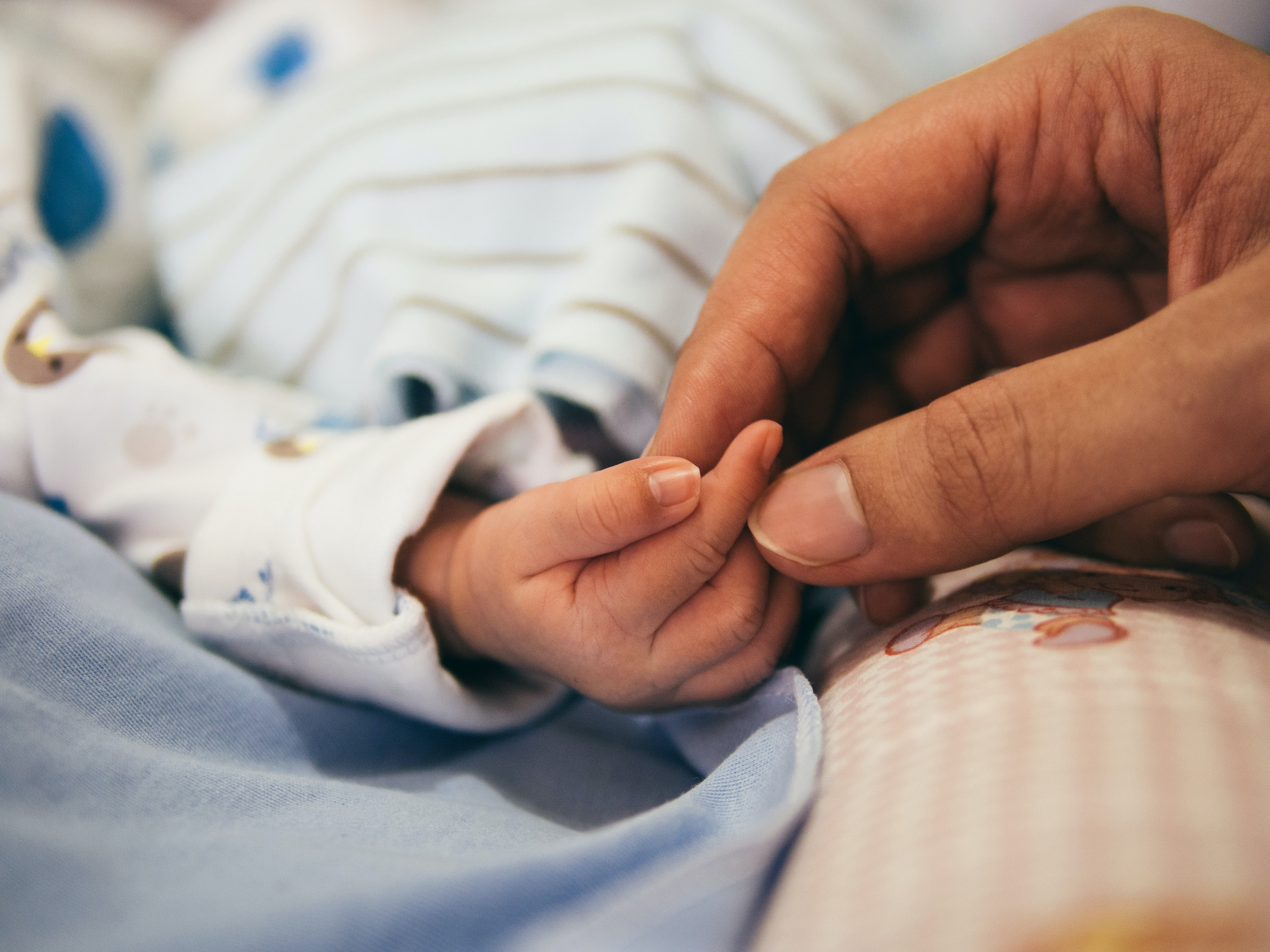Connecting With Your Children
It can be easy to compare adoptees and children from foster care to biological children. Children raised by their biological parents have an uninterrupted biological bond with those parents.
Children affected by foster care and adoption have different experiences. They may have experienced some type of abuse, neglect, or abandonment. Their experience may result in complications with trusting their caregivers. So, it is your job to work twice as hard to earn their trust. It is your job to connect with your child.
According to behaviorist, Karyn Purvis, caregivers should learn to connect before they correct. The idea is that children suffering from trauma do not often respond with traditional forms of discipline like consequences and rewards. They need to connect with their caregivers and learn to build trust. Then they will be better able to focus on correcting their behaviors. Consider these tips for connecting with your children:
Empathy
I feel that empathy is a lost art. Empathy is the ability to identify with another person’s feelings. Empathy differs from sympathy, which means to feel sorry for a person; Empathy means to feel alongside a person. Empathy is what both adoptees and children experiencing foster care need. They need our empathy.
We have seen some different behaviors in children who have experienced major challenges early on in their lives. These behaviors are not their fault; they may have been learned over some time as a survival mechanism. Do all you can to put yourself in their shoes. Ask yourself, “How would I act if I experienced what this child experienced?”
Some of these behaviors may include:
Food Hoarding
Many children in foster care struggle with this behavior. It may not be a matter of if they hoard food, but when. Food hoarding is when a child takes and hides food. From the child’s perspective, food is being secured for later. Perhaps the home where that child came from did not have regularly scheduled meals every day. This is a survival technique for kids who do not know where their next meal is coming from.
Show the child where snacks are. Tell them when the next meal will be served. Put out fruit and healthy snacks and plan for how often they can plant to eat a snack. Over time, the child will build trust and realize that they will not starve in your house.
Lying
Children do not lie and tell falsehoods because they are bad kids. They, at times, lie to protect themselves. Perhaps in their previous home, they had to lie to protect themselves or another member of the family.
Encourage honesty and openness through felt safety. Seek out professional guidance as needed.
Reactive Aggression
Not all children who were abused may act out, but some do. Children who have experienced any form of abuse are victims. When a child who has been abused hurts another child, it is referred to as reactive aggression or reactive abuse. This behavior can be a form of trauma reenactment, where the child re-experiences their trauma and may act out what they have been through on others. It can also be related to behavioral issues from early trauma, including the development of attachment disorders or emotional dysregulation.
In some cases, professionals may also refer to this as the cycle of abuse, as the experience of being harmed can sometimes lead to harmful behaviors if the underlying trauma is not addressed.
If a child who has been abused hurts another child, it’s important to respond with care, understanding, and appropriate intervention.
Safe Touch
All children need affection. However, because some children in foster care or who have been adopted have been abused or neglected, foster and adoptive parents need to take great care in how they show appropriate affection to their kiddos. They must come to understand that these children need to unlearn what they have learned and develop trust. They may be easier said than done. Be mindful of children sitting on laps, hugs, bathtime, and bedtime routines. These acts may be triggering or unfamiliar to your children. Approach each with caution and do all you can to communicate openly with your child and caseworker to help your child feel safe.
Music
Many foster children have never heard of any children’s songs or nursery rhymes. Something as elementary as the ABCs may be foreign to many children in foster care. Wouldn’t it be awesome to introduce this type of music to a child? Also, soft calming music at bedtime can work wonders. It promotes safe and calm thoughts rather than anxious ones. Music and singing are excellent ways to connect with your kiddo. Work to understand what your child best responds to.
Reading
Because of trauma, children who were adopted or are in the foster system may experience behavioral or academic delays. You can help to counteract these delays by reading to your child every day. Reading creates new pathways in the brain. Take your child to a library and check out a few books they may be interested in.
Play
For toddlers, play is work. They develop skills, they learn how to play alongside their peers (parallel play) as well as cooperate with their peers. They learn sharing, imagination, empathy, and leadership. They learn rules, self-control, and self-discipline.
Children who have experienced an international adoption may have been raised in a foreign orphanage. If that is the case, they may have experienced neglect and may missed out on the opportunity to engage in appropriate play. They develop gross motor and fine motor skills through play. Gross motor skills use arms and legs: running and jumping. Fine motor skills use fingers: learning to button a sweater or tying shoes. These are skills they will need later in life. Here are a few suggestions.
Sports
I believe that every child should experience athletics at least once in their life. Through sports, we learn physical fitness, eye-hand coordination, comradery, teamwork, and good sportsmanship.
Walks
Taking a walk accomplishes several things at the same time. It enhances physical fitness; it also exposes the child to nature and familiarizes them with their neighborhood.
Board Games.
Games such as checkers, chess, and even Uno for older children and teens help them to use a part of their brain that they may have never used before. They learn rules, cooperation, patience, and logical thinking strategies. For younger children, classic games like Candyland, and Sorry enhance sequence skills and counting. These are educational and fun.
Kinesthetics
Children generally are one of three types of learners: visual, auditory, and/or kinesthetic. Visual learners are those people who see something and memorize what they see. They are generally good readers, remember faces, don’t need directions when traveling, are good artists, and have a good memory. Auditory learners are good conversationalists and are generally good with music. Kinetic learners learn through doing. They may struggle to understand written directions or multi-step verbal directions. Rather, physically handling or experiencing something is how they may best learn.
Many young children are kinetic learners. They learn and connect the best through practical experimentation. Also, since many kids in care have sensory issues, caregivers must use other methods to calm their fears and anxieties. Here are some suggestions:
Trampolines
Rather than disciplining a child for wrongdoing, send him outside to jump on the trampoline for 2 minutes. This is not punishment but rather helps to re-focus the mind along with the body.
These are used with children who have sensory issues. It makes them feel safe and gives them the sensation that they are being hugged. It helps with sleep and regulation.
A fidget is a toy that children can play with while listening to a lecture. Children with sensory issues, autism, or ADHD may struggle to sit still for a 30-minute lecture. They need action. Toys like fidget spinners, a Rubik’s Cube, a Squish mallow, or a Popper Square go a long way to helping these kiddos. They need to keep their hands occupied or their hands will be tempted for mischief.
As caregivers, we must meet where they are. It is too much to expect them to perform like kids who haven’t experienced trauma. Their success or accomplishments are measured by different standards. The bottom line is that it is our job to meet their needs, not the other way around. If we choose to connect with them, they will feel safe, and life will be better for everyone in the home.








